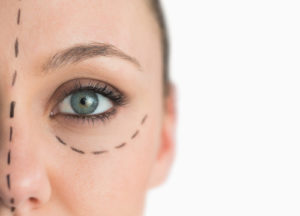What is hyaluronic acid? – Dermal Fillers Charlotte
 Fillers are a very popular group of treatments. They have a variety of uses, including filling wrinkles, correcting scars, and restoring lost facial volume. According to statistics collected by the American Society of Plastic Surgeons, more than 2.5 million people received treatment with fillers last year, making this one of the most popular cosmetic treatments.
Fillers are a very popular group of treatments. They have a variety of uses, including filling wrinkles, correcting scars, and restoring lost facial volume. According to statistics collected by the American Society of Plastic Surgeons, more than 2.5 million people received treatment with fillers last year, making this one of the most popular cosmetic treatments.
There are quite a few different dermal fillers currently available. Many of these products are made up of a substance called hyaluronic acid. What is hyaluronic acid, and how does it help to improve your appearance?
What is hyaluronic acid?
Hyaluronic acid (HA) is a natural substance that occurs within the body. Chemically, it’s made up of units of a particular type of sugar. HA occurs within the body in many different types of tissues, including skin, cartilage, eyes, and muscles. HA acts like a “sponge” that holds water, keeping tissues hydrated and lubricated. During the aging process, the body’s natural production of hyaluronic acid is gradually reduced. This results in a loss of volume in the skin and other tissues.
What is hyaluronic acid used for?
 As a medical treatment, hyaluronic acid can be injected into the body to provide hydration and volume to the tissues. For example, injections into the joints have been used for certain types of arthritis. In cosmetic medicine, HA injections are used to plump up certain areas (most commonly in the face) to improve the appearance. HA can be used to fill in a wrinkle, a deep fold in the skin, or a scar. It can also help to replace volume lost due to aging or other factors. We offer several different dermal filler brands that are made of hyaluronic acid, including Restylane, Juvéderm, and Belotero.
As a medical treatment, hyaluronic acid can be injected into the body to provide hydration and volume to the tissues. For example, injections into the joints have been used for certain types of arthritis. In cosmetic medicine, HA injections are used to plump up certain areas (most commonly in the face) to improve the appearance. HA can be used to fill in a wrinkle, a deep fold in the skin, or a scar. It can also help to replace volume lost due to aging or other factors. We offer several different dermal filler brands that are made of hyaluronic acid, including Restylane, Juvéderm, and Belotero.
What does hyaluronic acid particle size mean?
In the body, hyaluronic acid is metabolized and removed quite quickly. If unaltered HA were injected into the body, it would be gone in about a day. In order to help it stay in the body for a longer time, hyaluronic acid molecules can be cross-linked. This process creates chemical bonds between different hyaluronic acid molecules. Several different HA molecules linked together is referred to as a particle. If a product has a larger particle size, then it means that the HA molecules are linked together into larger groups. Cross-linking HA molecules slows the rate at which the body removes the hyaluronic acid. The larger the particle size, the longer the HA will last inside of the body.
A larger particle size also creates a thicker consistency of the medication. When HA is injected directly under the skin, particularly in areas where the skin is thinner (such as around the eyes), then a thicker HA product (with a larger particle size) can sometimes create a ridge or bump that can be seen or felt. For this reason, HA products with larger particle sizes are generally preferred for deeper injection or injection into areas with thicker skin, where any bumps created will not be noticeable. Smaller particle sizes are preferred for superficial injection (directly under the skin), particularly in areas where the skin is thinner.
Some HA products are variably cross-linked, meaning that the product contains a variety of different particle sizes. This may allow the product to integrate more easily into the nooks and crannies of the area where it’s injected, particularly if the product also has a low viscosity (meaning that the gel is thinner and runnier).
What problems can hyaluronic acid help with?
Plastic surgeons use different hyaluronic acid products for different indications. One of the most common uses is to fill the nasolabial folds, also known as the “marionette lines.” These run from the sides of the nose to the corners of the mouth, and are an area of concern for many people.
Dermal fillers can also be used for lip augmentation. Fillers offer a nonsurgical alternative to lip implants for those who would like a lip augmentation but would prefer to avoid a surgical procedure.
HA fillers may be used for fine lines and wrinkles that are close to the surface of the skin, such as “lipstick lines” around the mouth. They can also be used to fill in the tear trough area under the eyes, which can be helpful in reducing the appearance of bags under the eyes in some patients. Because the skin under the eyes and around the mouth is relatively thin and delicate, fillers of smaller particle size are usually preferred in these areas, in order to avoid creating visible or palpable bumps.
For fine lines or wrinkles around the eyes or brows, HA can also be useful. However, in this area, the results may not last as long due to significant movement of the muscles. This is why Botox is commonly used along with fillers, in order to reduce the amount of movement in the area. This can help the filler to last longer, and also helps to prevent new wrinkles from forming.
Another possible use for HA is replacing lost facial volume, which generally becomes noticeable during the aging process (particularly in the cheeks). However, it’s more common to use other types of fillers, such as poly-L-lactic acid (e.g. Sculptra), for correcting this problem. This is because these synthetic fillers tend to last longer than hyaluronic acid.
What if I’m not happy with my hyaluronic acid results?
One of the biggest advantages of an HA-based filler is that it’s reversible. An enzyme called hyaluronidase can be injected to dissolve the HA. If unwanted lumps form, or if the results are not what the patient expected, then hyaluronidase can be used to dissolve the filler.
Some patients choose to start with an HA filler to see how they like it, knowing that it’s reversible. If they like their new look and want to maintain the results for longer, they may be able to choose a longer-lasting type of filler, if it’s appropriate in that location. Others continue to come back for maintenance HA treatments on a regular basis, in order to maintain their results.
Are you interested in dermal fillers Charlotte?
There are quite a few fillers currently available, and new ones frequently come onto the market. Each of the fillers offered at our office is appropriate in a different type of situation, and comes with particular risks and benefits. When you come for your consultation with Dr. Miles, he’ll spend time talking to you about which one he recommends in your particular case, and why.
 The expertise of the clinician is the most important factor in determining the results you’ll get from your treatment. As a double board certified plastic surgeon, Dr. Miles has skills of the highest order, and is capable of achieving phenomenal results for his patients. When you come for a consultation with Dr. Miles, you’ll have the opportunity to discuss your goals with him, and to learn more about what treatment options would be most likely to lead to the results that you’re looking for. To schedule your appointment with Dr. Miles, please contact our office.
The expertise of the clinician is the most important factor in determining the results you’ll get from your treatment. As a double board certified plastic surgeon, Dr. Miles has skills of the highest order, and is capable of achieving phenomenal results for his patients. When you come for a consultation with Dr. Miles, you’ll have the opportunity to discuss your goals with him, and to learn more about what treatment options would be most likely to lead to the results that you’re looking for. To schedule your appointment with Dr. Miles, please contact our office.


